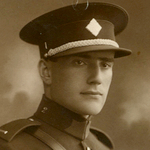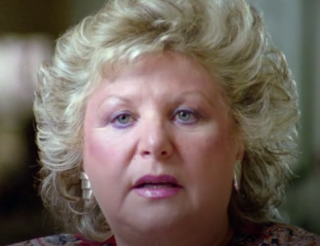
Petr Ginz was a Czechoslovak boy of partial Jewish background who was deported to the Theresienstadt Ghetto during the Holocaust. He was murdered at the age of sixteen when he was transferred to Auschwitz concentration camp and gassed to death upon arrival. His diary was published after his death.
Zuzana Růžičková was a Czech harpsichordist. An interpreter of classical and baroque music, Růžičková was the first harpsichordist to record Johann Sebastian Bach's complete works for keyboard, in recordings made in the 1960s and 1970s for Erato Records.
The Holocaust has been a prominent subject of art and literature throughout the second half of the twentieth century. There is a wide range of ways–including dance, film, literature, music, and television–in which the Holocaust has been represented in the arts and popular culture.
Hana Greenfield was born in Kolín, Czechoslovakia, from where she was deported to the concentration camps of Theresienstadt, Auschwitz and Bergen Belsen.

Siegfried Seidl was an Austrian career officer and World War II commandant of the Theresienstadt concentration camp located in the present-day Czech Republic. He was also the commandant of the Bergen-Belsen, and later served as a staff officer to Adolf Eichmann. After the war, Seidl was tried in Austria and convicted as a war criminal, sentenced to death, and executed by hanging.

Felice Rahel Schragenheim was a Jewish resistance fighter during World War II. She is known for her tragic love story with Lilly Wust. She was murdered either on a death march from Gross-Rosen concentration camp to Bergen-Belsen concentration camp or not later than March 1945 in Bergen-Belsen.

Annemarie Dina Babbitt was an artist and Holocaust survivor. A naturalized U.S. citizen, she resided in Santa Cruz, California.

I Never Saw Another Butterfly: Children's Drawings and Poems from Terezin Concentration Camp, 1942–1944 is a collection of works of art and poetry by Jewish children who lived in the concentration camp Theresienstadt. They were created at the camp in secret art classes taught by Austrian artist and educator Friedl Dicker-Brandeis. The book takes its title from a poem by Pavel Friedmann, a young man born in 1921 who was incarcerated at Theresienstadt and was later killed at Auschwitz. The works were compiled after World War II by Czech art historian Hana Volavková, the only curator of the Jewish Museum in Prague to survive the Holocaust. Where known, the fate of each young author is listed. Most died prior to the camp being liberated. The original Czech edition was published in 1959 for the State Jewish Museum in Prague; the first English edition was published in 1964 by the McGraw-Hill Book Company.

Ceija Stojka was an Austrian Romani writer, painter, activist, and musician, and survivor of the Holocaust.

Lucille Eichengreen was a survivor of the Łódź (Litzmannstadt) Ghetto and the Nazi German concentration camps of Auschwitz, Neuengamme and Bergen-Belsen. She moved to the United States in 1946, married, had two sons and worked as an insurance agent. In 1994, she published From Ashes to Life: My Memories of the Holocaust. She frequently lectured on the Holocaust at libraries, schools and universities in the U.S. and Germany. She took part in a documentary from the University of Giessen on life in the Ghetto, for which she was awarded an honorary doctorate.

Ilse Weber, née Herlinger, was born in Witkowitz near Mährisch-Ostrau. A Jewish poet, she wrote in German, most notably songs and theater pieces for Jewish children. She married Willi Weber in 1930. She was voluntarily transported to Auschwitz with the children of Theresienstadt and murdered in the gas chambers, along with her son, Tommy. Her most popular book was "Mendel Rosenbusch: Tales for Jewish Children" (1929).

Malva Schalek, aka Malvina Schalková, was a Czech-Jewish painter. Trained in Prague, she went on to work in Vienna as a painter. From 1942 to 1944 she was imprisoned in the Theresienstadt concentration camp. In 1944 she was moved to the Auschwitz concentration camp, where she was murdered. Many of her works are held in the Ghetto Fighters' House in Israel.

Helga Hošková-Weissová, also Helga Weiss, is a Czech artist, and a Holocaust survivor. She is known for her drawings that depict life at Terezín and her diary, which was published in 2013.
Alfred Kantor was a Czech-born Holocaust survivor, artist and author of The Book of Alfred Kantor. His work depicted daily life in the Nazi concentration camps.

Kurt Epstein was a Czechoslovakian Olympic water polo player and survivor of Nazi concentration camps.

Theresienstadt was originally designated as a model community for middle-class Jews from Germany, Czechoslovakia, and Austria. Many educated Jews were inmates of Theresienstadt. In a propaganda effort designed to fool the western allies, the Nazis publicised the camp for its rich cultural life. In reality, according to a Holocaust survivor, "during the early period there were no [musical] instruments whatsoever, and the cultural life came to develop itself only ... when the whole management of Theresienstadt was steered into an organized course."
Eva Olga Clarke is a British-Czech Holocaust survivor and former college administrator known for her birth at Mauthausen concentration camp. She is a speaker for the Holocaust Educational Trust. Clarke combats modern day instances of racism and prejudice through sharing her family's experiences in the Holocaust.
Margot Cecile Heumann was a German-born American Holocaust survivor. As a lesbian, she was the first queer Jewish woman known to have survived Nazi concentration camps.

Lilly Appelbaum Malnik is a Belgian-American Holocaust survivor who helped create the United States Holocaust Memorial Museum. She was captured by Nazi soldiers in 1944, during the German occupation of Belgium, and was imprisoned at the Mechelen transit camp in Belgium, Auschwitz concentration camp in Poland, and the Bergen-Belsen concentration camp in Germany. She was liberated from Bergen-Belsen in April 1945 by the British Army. Malnik's mother, two siblings, aunt and uncle, and grandaunt and granduncle were all killed during The Holocaust in Belgium. After World War II, she emigrated to the United States and was reunited with her father. She married Abraham Malnik, a Lithuanian Holocaust survivor, and they assisted in the founding of the United States Holocaust Memorial Museum. With her granddaughter, the American social media content creator Miriam Ezagui, Malnik has made TikTok videos detailing life in concentration camps.
Anna Hyndráková was a Czech holocaust survivor and historian. She worked at the Jewish Museum in Prague. During World War II, she survived both forced labour and concentration camps including the Theresienstadt, Auschwitz, Christianstadt, Niesky and Görlitz.













